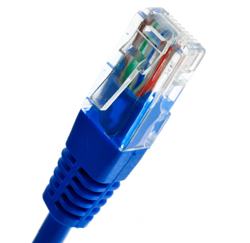While analog is still a popular and cost-effective method of signal distribution in pro audio, the benefits of going digital far outweigh the costs of switching from analog. No more electromagnetic interference (EMI) and high-frequency attenuation problems, and no more lugging around heavy multi-core analog snakes.
Still, digital’s not perfect. Latency (signal delay caused by converting the audio to/from analog and between various digital equipment) is not nearly the issue it used to be, but it can still be problematic. The more conversions and transport steps, the greater the latency.
In addition, there’s the lack of interoperability between various network protocols. Even hardware connections for some protocols can’t “speak” to each other – they may be the same at the protocol level but specify different electrical signal levels and/or use incompatible connectors or transport cabling.
For example, MADI over Cat-5 cannot directly interface with MADI over fiber optics. To solve this issue there are interface units called “bridges” that can covert from one protocol to another allowing different systems to coexist together. But a better solution is to upgrade the protocols to work together.
The Institute of Electrical and Electronics Engineers (IEEE) has developed technical standards and provide the specifications that will allow time-synchronized low latency audio and video networking. These Audio Video Bridging (AVB) standards have been well received. A group of professional and consumer electronics companies have formed the AVnu Alliance that provides testing and certification for submitted products ensuring they meet the AVB standards. Note, not all AVB products are submitted for testing as it’s a voluntary program.
Another group striving to help make various systems operate together is the Audio Engineering Society (AES) with the AES67 standard. This Layer 3 protocol suite is based on existing standards and is designed to allow interoperability between various IP-based audio networking systems.
Layer 1 protocols use Ethernet cables and switches but primarily employ proprietary media access control instead of the native Ethernet MAC. Examples include Riedel RockNet, Aviom A-Net, and Roland Pro A/V REAC.
Layer 2 protocols process audio by using the standard Ethernet packet approach. Two of the most well-known digital transfer approaches, CobraNet and EtherSound, use Layer 2, and it’s been adopted by numerous manufacturers.
Layer 3 protocols use IP packets for transmitting audio data over Ethernet cables. QSC Q-LAN, Axia Livewire, and Audinate Dante are a few of the transfer approaches that use Layer 3.
















